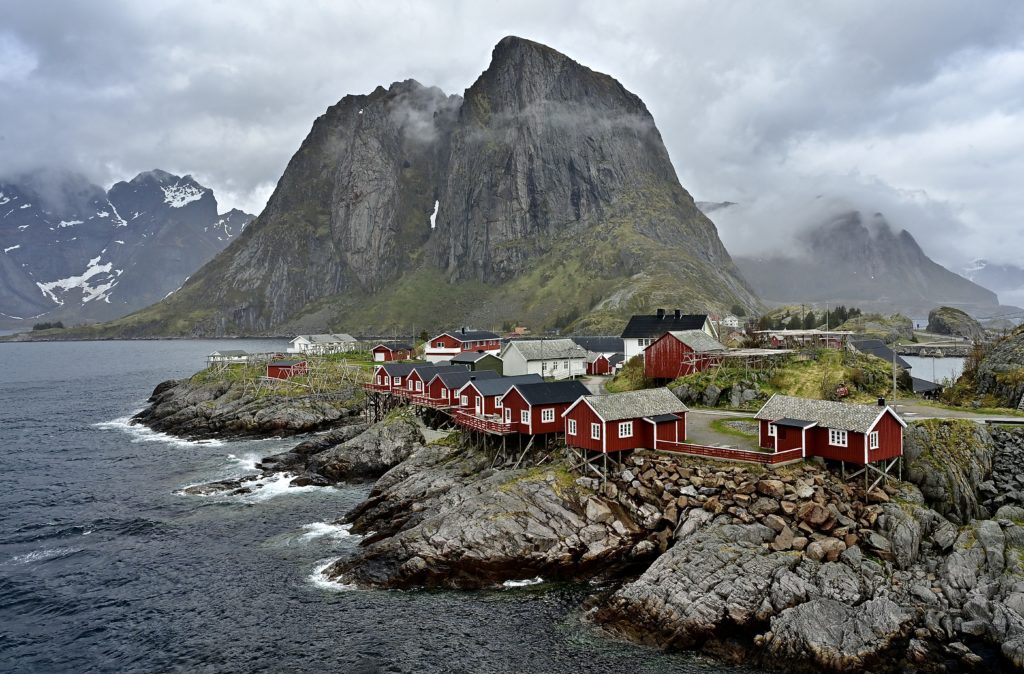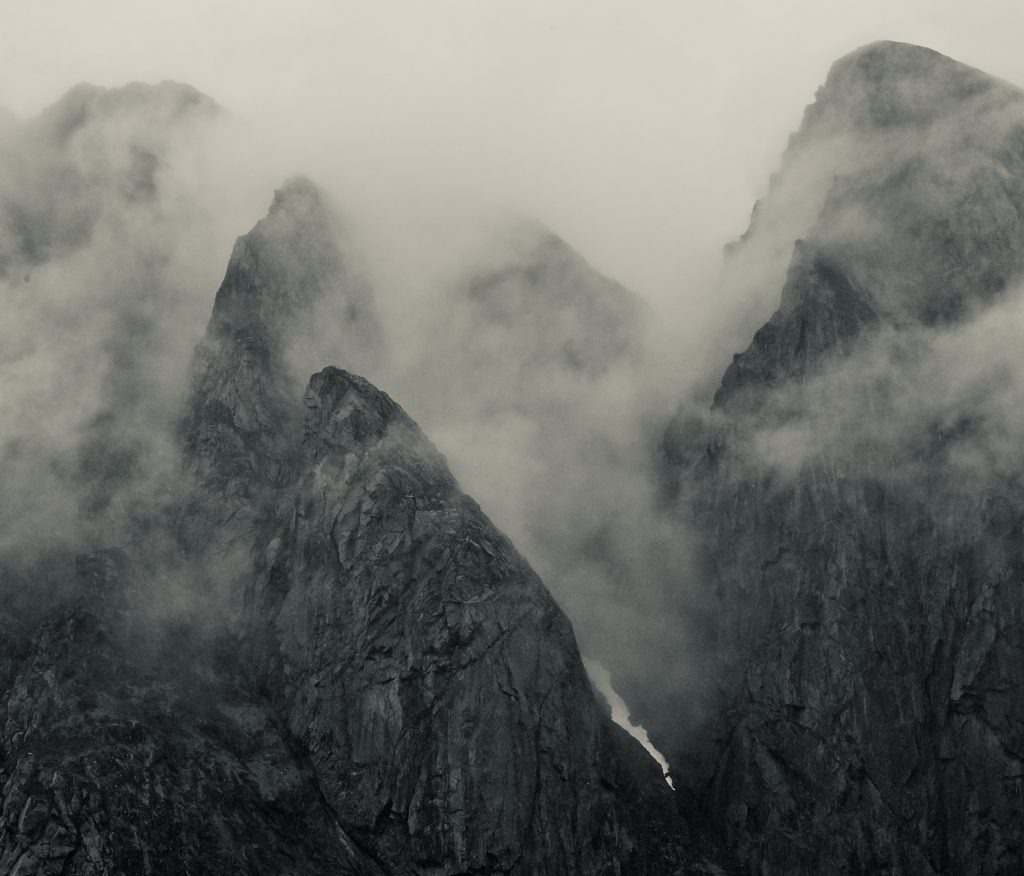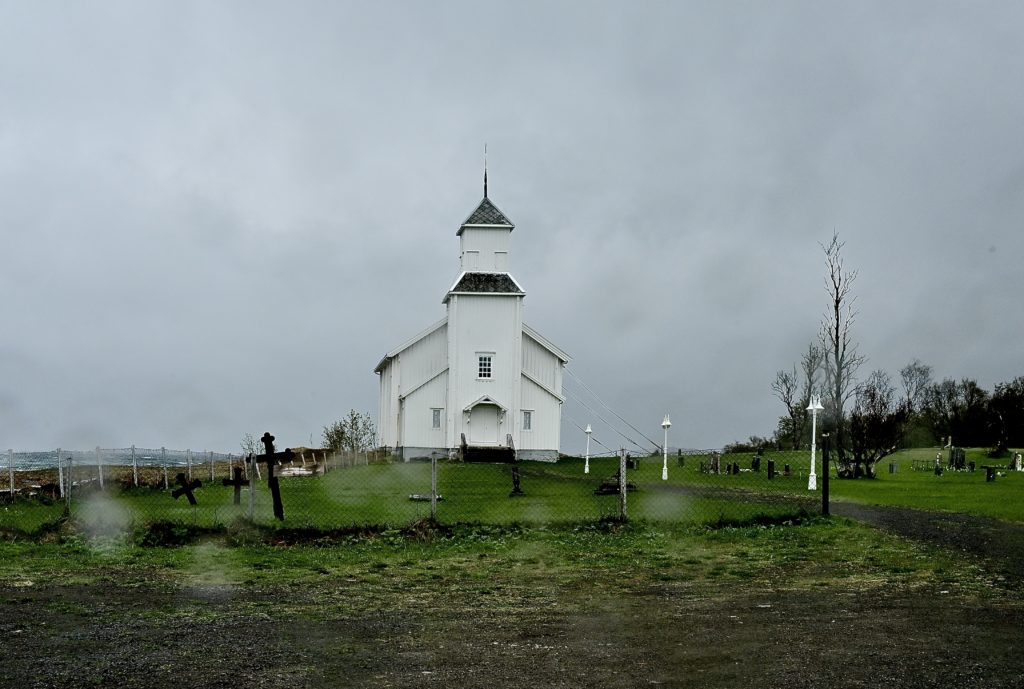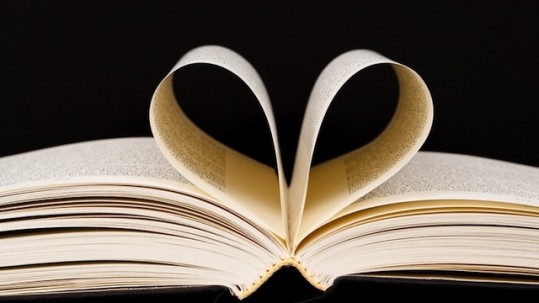“A Best Friend Is Someone Who Gives Me a Book I’ve Never Read” – A. Lincoln
In this mid-year post of approximately 80 books, equally split between Fiction (F) and Non-Fiction (NF), I’m sure you’ll find two or three you’ll add to your ‘to read’ list (and at least one could likely to be on your end of the year favorites).
As usual, the value in what is below comes from what the 38 contributors (evenly divided between female and male) have written about the favorites they’ve cited.
And as always, I’m deeply appreciative and thankful for the contributors who have taken the time to participate and send in their current favorite reads. These posts only work because various friends take the time to respond to my call for books most enjoyed by MillersTime readers.
Alphabetical by first name:
Barbara Friedman:
Three Ordinary Girls by Tim Brady (NF) recounts the harrowing works of three teenage girls in Nazi-occupied Netherlands. They sheltered Jews and political dissidents, sabotaged bridges and railroads, transported weapons – and this is only a bit of what they did in defiance of the occupation. This is a different look at WWII heroism and worth a read.
Nancy Pelosi by Molly Bal (NF) is a very readable and enjoyable biography of a formidable lady, elected to Congress when she was 47 after she had raised 5 children but never held any elected or government position. The book highlights her hard work to realize many, many legislative accomplishments (and they may not be over yet). I wish we had more like her in government today!
In the Nation’s Service: The Life and Times of George P Shultz by Philip Taubman (NF) relates a remarkable life importantly covering four stints in government as head of major cabinets. You also learn early on that he has a tiger tattoo on his rear! Well worth a read.
Ben Senturia:
My wife and I have begun reading (historical) novels by Kate Quinn, a NYT best selling author. We have read Rose Code (NF) and The Alice Network (F), both of which are based on women from WW I and WW II. The Rose Code focuses on three British female code breakers at Bletchley Park during WW II who are struggling in their private lives while trying to maintain strict secrecy around their jobs. The Alice Network is centered on a real-life female French spy network. Quinn’s character development and plot both drew us in and captivated us. I’m looking forward to the next one.
I continue to read read a variety of Harlan Coben mysteries including the Myron Bolitar (F) and the Mickey Bolitar (F) and numerous free standing books. Coben is a good writer with a wonderful story telling ability.
Bill Plitt:
This Tender Land by William Kent Krueger (F) upon the recommendation by a longtime friend who has known me very well for many years and thought I might resonate with this book of adventure. I did!
The story surrounds four characters: Odie, Albert, and Emmy who find themselves in a boarding school for Native American children, but includes Mose, who is mute and only speaks in sign language. The four of them flee the scene in an existential struggle to find freedom from their past through various trials brilliantly set by Kruegger. These moments are accompanied by Odie’s playing of his harmonica along the river to their destination of St Louis in their bold escape from the boarding school and its past.
The story reminds me of Huck Finn, but grabs me more deeply because I have found that this simple instrument has been a vehicle for expressing God’s presence at certain moments of my life, and also as a link with humanity surrounding me at that time.
But what really made the novel by Krueger most meaningful to me, was that “just by a chance”, I had read Barbara Kingsolver’s latest book Demon Copperhead (F) previously. Her novel is about life for a young boy who struggles through his life of brokenness in the Appalachian world of SW Virginia, on a similar journey as Odie, but reminiscent of Charles Dickens’ David Copperfield. Reading both by following the other is a dynamic experience worth three novels.
Brandt Tilis:
Tribal Leadership by Dave Logan, John King, and Halee Fischer-Wright (NF). An eye-opening book about cultural ideals and ways to identify where your workplace culture is and how to get it where you want it to be. The book puts organizations into five different buckets and has easy-to-understand but hard-to-accomplish methods to advance your organization into the coveted “Stage 5 Culture.” A useful book for leaders and people who want to lead.
Three Body Problem by Liu Cixin (F). A Sci-Fi book that has its roots in Cultural Revolution era China. I had a hard time starting it, but once I understood who the characters were, I was hooked. The Sci-Fi part gets a little technical, but it’s a fun adventure to figure out what’s going on. It has some shades of the show Lost.
Empire of Pain by Patrick Raden Keefe (NF). The combination of the excellent writing and the story itself makes this book read like fiction (you’re hopefully reading this before my Elizabeth’s review of the same book where she almost assuredly said the same thing). This is a book about the opioid epidemic, and it made me take a hard look at a lot of things in today’s world: community, religion, corporate culture, justice, and who I choose to support. It left me feeling both empty and motivated.
Brian Steinbach:
Chronicles by Bob Dylan (NF). This came out in 2004, but I picked up a used copy. Rather than a complete memoir, it is more a series of ruminations on five parts of his life – perhaps most interesting is the first part, which covers the time before he had a recording contract, adventures in the early 60’s NYC folk scene.
The Last Days of John Lennon by James Patterson with Casey Sherman & Dave Wedges (NF). Somewhat of a miss-title, as it actually covers most of his life, but the focus is on paralleling his last days with the Mark Chapman’s stalking and murder of him. This part is drawn from an article one of the co-authors first wrote, I believe. Well documented and interesting.
Renegades: Born in the USA by Barack Obama and Bruce Springsteen (NF). Drawn from podcasts they did in 2020, with many photographs, copies of edited speeches and songs. The conversations have a wide range, from the personal to the future of the country. Almost worth it just for the picture of Obama driving Bruce’s ‘Vette.
Chuck Tilis:
Man In the White Sharkskin Suit–A Jewish Family”s Exodus From Old Cairo To The New World by Lucette Lagrnado (NF). An emotional story, told through a young girl’s eyes (the author-Lucette Lagnado)) of enjoying the comforts of life in a cosmopolitan Cairo, only to have Nasser rise to power and force this Jewish family to emigrate to Paris and then New York. “The Man” is her father who is a bon-vivant around Cairo, whom Lucette adores even through his many foibles which result in significant hardship for the entire family as they attempt to assimilate in New York as Egyptian Jews. Yet, Lucette perseveres through what one reviewer called an “inversion of the American Dream” as her father never finds financial footing upon leaving Egypt. This story is beautifully written and delves deeper into the complexities of family, religion and human resolve.
The Arrogant Years–One Girl’s Search For Her Lost Youth From Cairo to Brooklyn by Lucette Lagnado (NF). This is the sequel to the aforementioned Man in the White Sharkskin Suit. I was so moved by the author’s affinity towards her father, I wanted to learn more about her story. The untold hero is actually her mother, who is treated at best indifferent and at worst cruelly by her father throughout what was an arranged marriage of sorts–by him and his mother-in-law. Again, Lagnado’s writing style captures the essence of the family’s history and shows her mother’s resolve to provide for her family.
Elusive Links: A Story of Connection, Compassion and Competition by Dan Rosenberg (HF). How about a book that combines aspects of the Spanish Inquisition, history of golf, modern day relationships, and Maimonides that keeps you thinking the whole way through? Dan Rosenberg, a first time novelist, who came out of the business world put the pieces together in an incredibly well researched historical fiction story. Part of the fun in reading this book is thinking about how the author handled the research, writing, editing, story development, and all the other components for a successful novel.
Chris Rothenberger:
The Women of Brewster Place by Gloria Naylor (F). This book was our book club read that has truly stayed with me since reading it in early March. It is the story of the realities of life of seven Black women living in a bleak inner city housing project. It reads as seven separate stories, but truly their lives and survival are intertwined as they struggle to survive and come together at the end. Hopes, dreams, tragedy, disappointment and loving events punctuate their struggles as each woman faces often insurmountable challenges to forge ahead. It is very well written and the author creates very memorable characters in each woman easily pictured by the reader. It was Gloria Naylor’s debut novel. Hopes and dreams, challenges, strengths and weaknesses punctuate the stories that are simultaneously loving and painful. In 1989 there was a miniseries starring Oprah Winfrey and it is available on streaming services and served to powerfully galvanize the stories of each woman in the book.
Cindy Olmstead:
The Lowland by Jhumpa Lahiri (F): tale of two brothers raised in the suburb of Calcutta, one brother shy and obedient, the other impulsive. Though inseparable as children their young adult and adult lives cause them to take different paths, one breaking rules or contradicting authority, joining a radical group of Maoists. The other goes to United States to get a PhD in Environmental Science. Compelling novel that deals with brotherly love, sacrifice, cultural norms and conflict, political violence, familial duty and personal commitments. An excellent novel.
The Huntress by Kristen Quinn (HF): set during and just after WWII, it features an English journalist and a Russian female bomber pilot hunting for a Nazi war criminal who has killed children as well as adults. Interwoven is the young photographer who suspects her widowed father’s new fiancée, a German widow. A heart-wrenching story that will keep you reading to the very last page. Filled with unexpected twists that make Kristen Quinn a memorable author.
This Is How It Always Is by Laurie Frankel (F): this is a riveting story about a family with five boys, a pediatrician mother and a writer father. The youngest boy is Claude who, at the age of five, wants to be a girl when he grows up. His parents want him to be whoever he wants to be, yet are not sure how to share this with the world. Secrets are kept within the family so no one knows until… This novel caused me to address my own role as a parent and how I would manage such transformative situations in this ever changing world. Found it a soul-searching read.
David Meyers:
Bibi: My Story by Benjamin Netanyahu (NF). Just finished reading BIBI. Great read, & I believe he was the Winston Churchill of Israel.
David Stang:
As a way of procrastination in order to avoid tedious administrative undertakings I have been escaping by reading a copy of the original addition of James Boswell’s Life of Samuel Johnson (F), the creator of the first extensive dictionary of the English language which was published approximately 300 years ago, or, to be more specific, in 1747.
Boswell’s opus is published in redacted form, the length of which is only 440 pages. On a year by year basis Boswell delightfully reports about multitudes of Samuel Johnson’s activities and commentaries. His method each annual assessment is to record both the year itself as well as Johnson’s age.
It is a delight to behold his intriguing discussion of how Johnson went about publishing his dictionary, which was expanded from one volume to two volumes in its second edition. Boswell also covers nearly every spoken encounter as well as most written encounters which to his knowledge and research did in fact come to pass.
Boswell comments that some of the definitions included in Johnson’s dictionary are intended to be witty and are filled with hyperbole. Boswell also mentions and lists some of Johnson’s definitions that are just dead wrong. Also reported by Boswell is the manner in which Samuel Johnson researched and compiled his dictionary, which took Johnson only three years to complete.
Donna Pollet:
In Memoriam by Alice Winn (F). A beautifully written love and coming of age story of two English boarding school boys and the horrid experience of trench warfare during The Great War.
Trust by Hernan Diaz (F). Immersive storytelling about capitalism and the art/skill of making ungodly amounts of money, odd and curious personalities, and the varied versions of truth we tell ourselves, we tell the world, and those that remain hidden. It reminded me of the classic film, Rashomon.
No One is Talking About This by Patricia Lockwood (F). Life through the eyes of an internet influencer and life as felt and experienced as a sister, daughter, family are contrasted in witty, sharp tongued, and moving language. Leaves you with more questions.
Ed Scholl:
Crazy ’08: How a Cast of Cranks, Rogues, and Magnates Created the Greatest Year in Baseball History by Cait Murphy (NF). Baseball fans will especially enjoy this book about baseball in the “Deadball Era”, which was a lot more exciting than it sounds. It has more than baseball trivia…the author gives great contextual accounts of daily life in the cities where the big pennant races were taking place that year: New York, Chicago, Pittsburgh and Detroit. And there are also fascinating accounts of the greedy owners, corrupt officials, and gambling magnates that controlled the game. You come away with pity for the poor players of that era.
Elizabeth Fleming Frost:
1421: The Year China Discovered America by Gavin Menzies (NF) was a book I picked up from the neighborhood free library box. I like history but was unable to put this book down. What a treasure trove of new information about the history of map making, the navigation principles, and the importance of libraries.
Elizabeth Lewis:
This Other Eden by Paul Harding (HF). The story – based absolutely on historical events – concerns an island off the coast of Maine settled in 1780 by black Africans and their ultimate and tragic displacement. Written in dazzling prose, the book forces the reader to wrestle with the monstrous effects of eugenics and racism. Not a “happy” read.
Elizabeth Tilis:
Empire of Pain by Patrick Radden Keefe (NF): Best non-fiction read of the year so far for me. Got it from the Millerstime list from last year! Loved it. Want to watch “Dopesick” on Netflix next.
The Winners by Fredrik Backman (F): The final in the Beartown series trilogy. Loved it!
The Measure by Nikki Erlick (F): Loved this one too!
Ellen Miller:
A Fever in the Heartland: The Ku Klux Klan’s Plot to Take Over America, and the Woman Who Stopped Them by Timothy Egan (NF). This is an extraordinary book. It tells of a time in the 1920s when the Ku Klux Klan was reconstituted in Indiana by a slick salesman and soon spread throughout the country, hoodwinking some, finding willing participants in many places, and paying off others to join with them to create a white supremacist movement.
I was glued to this book. This is history I didn’t (and probably you didn’t either) learn in school. It includes a horrific story of one woman who revealed the leaders’ moral hypocrisy. Soon their political and financial corruption was revealed, and leadership began to decline. Egan’s writing is engaging and vivid. It’s hard to put this book down. It is a frightening reminder of the dangers we face today.
Life Sentence: The Brief and Tragic Career of Baltimore’s Deadliest Gang Leader by MarkBowden (NF). This book was another compelling read (although I listened to it). It is a gripping and harrowing true-crime story that chronicles the life of a young man and his gang in Baltimore during the 1990s which started off by selling drugs and ended up as a kill for hire operation. It is the story of what it’s like to live on the streets of Baltimore and why the young men and women crave this despite the danger, jail terms, and potential retaliations. It is also the story of the failure of the myriad programs that were put into the place over the years designed to change their lives and the nature of their community. Bowden’s writing is compelling and detailed, and he provides a powerful insight into the social and economic conditions that contribute to the rise of gang violence in the city. This is a history you may know, but not in this detail or with this insight. By the end, you will find yourself stunned by the totality of it all.
Hello Beautiful by Ann Napolitano (F). My reading often runs in my favorite themes – racial inequality, Irish, Indian, African literature, historical fiction, the Holocaust, World War I and II. I rarely read what today is described as “literary fiction:” well told and written stories on other topics. This book — Hello Beautiful— proves to me that I should read more in this category more often. It is a story about love, commitment, and strong women. The writing is terrific – conveying tenderness and relationships so clearly. The unusual story drives this book, and the characters bring it home. You’ll be looking for more from the author when you finish it. It will be a great summer read, actually it was a great winter one.
Ellen Shapira:
West with Giraffes by Lynda Rutledge (HF): I found this to be a very enjoyable read, an extremely well written combination Water for Elephants and Lincoln Highway, two of my all time favorites. The story is based on a true event, the arrival from Africa of two giraffes in 1938 New York City during a severe hurricane and their subsequent cross-country drive to their eventual new home at the San Diego Zoo. There are three main characters, the zoo keeper in charge of the transport, the unlikely eighteen year old Okie who becomes the main driver, and a beautiful young women who is following along the way. The plot is simple but dynamic, with lots of drama and surprises. The characters are interesting and likable though all have mysterious pasts which become revealed along the way.
Lucy by the Sea by Elizabeth Strout (F). This is the latest in the Lucy series books and picks up with heroine Lucy later in life, spending the pandemic in isolation with her ex-husband William. Like her other books, Lucy by the Sea is beautifully written, hitting on all the right notes of love, loss, despair, and the unknowing anxiety of that first year of COVID. I have read several other books set during the pandemic, but none seemed to ring as true as this one does in capturing the emotional toil it took on everyone as we lived through it.
A Fine Balance by Rohinton Mistry (F). This is a real classic which I had read many years ago but re-read as a Book Club selection. The story is set in 1975 India during a tumultuous period of Indian history. Caste system violence is prevalent throughout the book and has various effects on the four main characters – a poor lower caste tailor and his nephew trying to escape their horrific past in their rural village, a middle class woman trying to make it on her own without a husband, and a young naive student who is uprooted from his idyllic town. These four characters end up sharing living arrangements, starting out with little trust or respect for each other and somehow develop bonds that go beyond a loving family. The four characters are joined by many colorful and intriguing characters who add much richness to the plot. The sweeping plot captures both the horrors and corruption of life in India during this period and also the strength and resilience of the human spirit.
Emily Nichols Grossi:
The School for Good Mothers by Jessamine Chan (F), although based on a real story about a woman whose child was removed by CPS, this novel, Chan’s debut, felt both dystopian and possible. Frida, the main character, leaves her 18-month-old daughter at home unattended for two hours, the daughter is taken, Frida is heavily surveilled and ultimately sent to an experimental rehab facility for “bad mothers.” This is chilling in an Atwoodian sense, and I couldn’t put it down.
The Winter Guest by WC Ryan (F). This is a somewhat slow/quiet–but in the best way–mystery that takes place in 1921. Just years after the Easter Rising, Ireland is in a civil war. The daughter of a prominent landed family is murdered. She did participate in the Rising, but the IRA is suspected of killing her. Whodunnit?
Fruzsina Harsanyi:
The Wager: A Tale of Shipwreck, Mutiny and Murder by David Grann (NF). I don’t use the words “page-turner” often, but I couldn’t put this book down. I read it on kindle and listened on audible, sometimes replaying a scene because the descriptions of life on a British man-of-war in 1740, on deserted islands off Patagonia, battles at sea and ship wrecks were riveting. This latest work by the superb author of Killers of the Flower Moon was so meticulously researched that even the 35 pages of notes were an interesting read. On another level, it’s also a moral tale of what it’s like to build an empire and who pays the cost.
The Daughters of Yalta, The Churchills, Roosevelts and Harrimans in Love and War by Catherine Grace Katz (NF). It’s February 1945. Sarah Churchill, Anna Roosevelt, and Kathleen Harriman are invited to accompany their fathers to Yalta. Each woman is an accomplished, trusted confidant of her famous father. Through their experience we get a glimpse of the public and private interactions — meetings, dinner parties, personal relationships — behind the decisions that shaped the post WWII world. What they witnessed at Yalta would be interesting enough, but we also see them through correspondence with their mothers and the other women in their fathers’ lives. The book ends with how they live out their lives after Yalta.
Demon Copperhead by Barbara Kingsolver (F). I’m a latecomer to this book, which won the Pulitzer Prize, and was reviewed by several Millerstime readers last year. Set in Appalachia, where Kingsolver lives, it’s a story of a boy, his family, and friends, and the people and institutions who use and abuse him. The writing is so pitch perfect that I felt like I was entering a world that no news report of this life so poor and hopeless could ever make real. It’s some of the same characters and scenes we found in J.D. Vance’s Hillbilly Elegy, except in Kingsolver’s work there is also humanity and joy and people to love.
Gandiff:
The Master Game: Unmasking the Secret Rulers of the World by Graham Hancock and Robert Bauval (NF).
Garland Standrod:
The Notebooks of Malte Laurids Brigge by Raner Maria Rilke (F). This was Rilke’s only novel, but it is available now in a new translation. Amazon says it best: “A groundbreaking masterpiece of early European modernism originally published in 1910. The Notebooks of Malte Laurids Brigge unspools the vivid reflections of the titular young Danish nobleman and poet. From his Paris garret, Brigge records his encounters with the city and its outcasts, muses on his family history, and lays bare his earliest experiences of fear, tenderness, and desolation.”
All About H Hatterr by G.V. Desani (F). First published in 1948, this comic novel chronicles the adventures of an Anglo-Malay man seeking enlightenment and wisdom. His final glimpse of wisdom is this: “avoid charlatans and frauds as you would a venomous snake”, which is good advice indeed. Desani’s prose style is rather extravagant.
The God of Small Things by Arundhati Roy (F). Again Amazon says it best: “Arundhati Roy’s modern classic is equal parts powerful family saga, forbidden love story, and piercing political drama. The seven-year-old twins Estha and Rahel see their world shaken irrevocably by the arrival of their beautiful young cousin, Sophie. It is an event that will lead to an illicit liaison and tragedies accidental and intentional, exposing “big things [that] lurk unsaid” in a country drifting dangerously toward unrest.
Haven Kennedy:
Strange the Dreamer by Laini Taylor (F). This is one of the most interesting series I’ve ever read. It gets quite a bit of flak for ‘genre jumping’, and it’s undeserved. The book deftly weaves a variety of stories together, with imagery and stories borrowed from a variety of different cultures and mythologies. It’s excellent.
Two authors:
Naomi Novik: Everyone is aware of historical fiction, but how many are aware of historical fantasy? Novik started her writing career with a series of novels set during the Napoloenic Wars. The books are well-researched and have the added benefit of dragons. It’s absolutely as bizarre as it sounds, brilliantly so. Novik has also written two books based on fairy tales, both of which are written from a female perspective and allow the heroine to do the rescuing. Finally Novik wrote the Scholomance series (F), a far more realistic version of Harry Potter. She brilliantly wove in a variety of different cultures, her through research being seen in the character’s names, history, and demeanor.
Robert Jackson Bennett: Bennentt is a brilliant and interesting author. He writes about a world where the once-conquered rose up and became the domineering force. He’s also written several other books. The most interesting thing about Bennett is his large assortment of LGBTQ+ characters. His stories are excellent.
Hugh Riddleberger:
I have just read Rinker Buck’s book Life on the Mississippi (NF) and am part way through one of his earlier book The Oregon Trail (NF). Rinker is not a reenact-or, but he lived these two incredible journeys as a modern day explorer of history, fauna, and the challenges of outfitting a covered wagon or building a flat boat and traveling great distances…SLOWLY… (who would think one could write an entire but enjoyable chapter on MULES!!) In my opinion he is a true renaissance man, as what he does not know he learns through books, listening to people who know more than he does, and possesses an innate curiosity coupled with courage, perseverance and “gumption”. Both non-fiction and very readable.
Jane Bradley:
The Covenant of Water by Abraham Verghese (F). An unlikely story, set in the state of Kerala, India — full of surprises that will pull you in and keep your attention, maybe all summer long.
Finding Me by Viola Davis (NF). A very moving memoir, especially engaging as an audiobook read by the author.
Jeff Friedman:
G-Man: J. Edgar Hoover and the Making of the American Century by Beverly Gage (NF). The book resembles biographies by Robert Caro with respect to its themes and its moral ambiguity (and its length!), but it’s somehow even more rigorous. Since Hoover was in power for so long, the biography engages an amazing breadth of U.S. political and social history.
High: A Journey Across the Himalaya through Pakistan, India, Bhutan, Nepal, and China by Erika Fatland (NF). Highly absorbing travel journalism that focuses on the region’s unusual cultures. I enjoyed reading this while googling images of the places the author visited.
Jesse Leigh Maniff:
The Wager: A Tale of Shipwreck, Mutiny, and Murder by David Grann (NF).
Joe Higdon:
The Island of Extraordinary Captives by Simon Parkin (NF) is the story of German refugees that Churchill interned on the Isle of Man during WWII and how they organized themselves into a livable community.
American Midnight by Adam Hochchild (NF) is the chilling story of how Americans treated desenters during WWI and used the war as an excuse to try to destroy the labor movement.
The Revolutionary: Samuel Adams by Stacy Schiff (NF) about the most overlooked founding father. Some say there would never been a revolution had it not been for Samuel Adams. It colors the pre-revolutionary period in vivid detail.
Judy & Mike White:
Judy and Mike – Rough Sleepers by Tracy Kidder (NF). We’ve enjoyed everything we’ve read by Tracy Kidder, our favorite being Mountains Beyond Mountains in which Kidder learns of a person, Dr. Paul Farmer, whose work/mission in Haiti interests him, and shadows Farmer for years to understand the Haitian situation and understand Farmer. This new book, out this year, follows the same pattern with another doctor, Dr. Jim O’Connor, who took a “temporary” position just out of medical school to work with street people in Boston and makes it his lifetime work. O’Conner, the others (especially the nurses) working with him, and the street people (those who sleep outside, not in shelters) are all fascinating. We now have a better sense of why street people often stay in this lifestyle for most of their lives, even when other options might be possible. We were surprised by the number of women living on the streets, the size of the problem, and the difficulty of providing services; and re-learned the powers of just listening and accepting people to help them heal… as well as the lasting effects of childhood trauma.
Mike – Operation Pineapple Express by Scott Mann (former U.S. Special Forces) (NF). Amazing true story of an incredibly difficult effort to rescue Afghan allies and their families during the chaotic withdrawal from Afghanistan.
Judy – His Very Best: Jimmy Carter, A Life, by Jonathan Alter (NF). Encyclopedic biography of Jimmy Carter from birth to this past year. The author learned so much about Carter and his family and those in his administration that reading it all can be overwhelming, but throughout it seems fair and thoughtful and very, very well researched. It’s possible to pick and choose chapters that interest you.
Kathy Camicia:
Apeirogon by Colum McCann (HF). A beautiful writer wrestling with another culture and twisting and turning to be as objective as possible.
The Years by Annie Ernaux (NF). If you want the French version of the life of a boomer, she does it very well.
100 Poems to Break Your Heart—ed. Edward Hirsch (F). If you have any interest whatsoever in poetry this book is a gift—short poems, two to three page explanations and the lovely resonance of a good poem.
Kathleen Kroos:
The Extraordinary Life of Sam Hell by Robert Dugo (F). Sam Hill’s mother promised he’d live an extraordinary life, and in time he finds out for himself.
The Girl with Seven Names by Hyeonseo Lee (NF). A true story about her escaped from North Korea.
The Two-Family House by Lynda Cohen Loigman (F). Her debut novel about love, loyalty, and long buried secrets.
Land Wayland:
Life Between the Tides by Adam Nicolson (NF). I start this submission trumpeting this as one of the finest pieces of writing I have EVER read. Concise. Knowledgeable. Thoroughly Human. Intelligently spanning the scope of inquiry both scientific and philosophical from specific to everyday relevant. (Heraclitus is an (un)acknowledged co-author). A detailed journal of the years of work invested by the author as he created three tidal pools at Rubbha an t-Sasunnaich on the Scottish coast on the Sound of Mull and then carefully followed the waves of life that followed until stability was reached years later. Who knew the storied Greeks and their acolytes knew so much about the way life populates large shallow pools of sea water that is refreshed twice daily and otherwise left to its own dramas.
This is a book that I will reread once a year and it will always be fresh and inspiring. (It is so well written that I promptly ordered five other books he has written—he is like my favorite professor in college…it mattered not what course he said he was teaching; I enrolled to study with the teacher).
Probable Impossibilities: Musings on Beginnings and Endings by Alan Lightman (NF). Professor at Harvard and MIT in Science and the Humanities, speculates at a very sophisticated level about the myriad of stories that connect the smallest in nature with the largest. Who knew such fascination awaits at either end of an extensive string of “0’s”. In each short essay, he explains his specific subject matter so well that his surprising revelations and digressions make sense. A worthwhile way of stretching the imagination.
God’s Secretaries: The Making of the King James Bible by Adam Nicolson (NF). The story of how the King James version of the Bible came to be written with the full cooperation and deep scholarly input of both Catholics and Protestants despite their recent 200 years of bitter and bloody wrangling over every possible religious issue. Details how the newly crowned King James created the framework and the instructions for this to be done, chose the 51 senior scholars to do the work, and guided the six “teams” that met for more than 5 years to produce one of the most important pieces of writing in Western civilization. Crystal clear, adult writing (with a sprinkling of rarely used words (threnody, irenicon, encomium) properly used to keep the audience engaged). Each of the author’s sentences is a testament to the ability of a brilliant writer to make anything interesting, even the writing of an 800,000 word, 1200 page book that has been and will continue to be read cover-to-cover by less the 1% of its 1,000,000,000+ buyers.
Larry Longenecker:
I just downloaded a recommendation from Land Wayland titled “An Immense World.” Why this one out of all the choices? I was intrigued by his mention of “I didn’t know that,” and “So that’s how/why they do that.” I’ll let you know what I think of the book.
In the meantime, having read Letters Home, I think you might enjoy John Grisham’s Sooley (F).
Marsha Harbison:
The Lincoln Highway by Amor Towles (HF). It’s historical fiction, extremely well written, set in 1954 during a 10 day journey across the U.S. It’s a coming of age story with an interesting cast of characters and stories touching on many important themes about life.
The Masters of Medicine by Andrew Lam, M.D. (NF). This is non-fiction and an extremely interesting historical recounting of “Our greatest triumphs in the race to cure humanity’s deadliest diseases”. Dr. Lam highlights many rivalries and feuds of scientists and doctors researching and making life saving breakthroughs in heart transplants, insulin, penicillin, polio vaccine, cancer, and childbirth. He is a local author (living in Longmeadow, MA) and an excellent retina surgeon, who has also written Saving Sight, Two Sons of China, and Repentance (the last two set in WWII).
Dinners with Ruth by Nina Totenberg (NF). This is an interesting quick read written by NPR legal affairs correspondent, Nina Totenberg about the power of friendships,especially with Ruth Bader Ginsberg. It’s a touching book filled with interesting information about various political figures and journalists and also about her famous father, Roman Totenberg, violinist and teacher. One chapter features the discovery and return of his Stradivarius violin, which was stolen and hidden for 32 years.
Melanie Landau:
The Midnight Library by Matt Haig (F), a novel about all the choices that go into a life well lived.
Nicole Cate:
Demon Copperhead by Barbara Kingsolver (F). This book hit a lot of topics of interest for me, including poverty, opioid addiction, corporate greed, and “left behind” parts of America. The characters were complex and engaging, and I loved the writing style.
Never Simple by Liz Scheier (NF). Memoir of a woman raised by a single mother with significant mental health issues. Interesting and well-written story. The author used turns of phrase that were wise, spot-on, and funny.
Remarkably Bright Creatures by Shelby Van Pelt (F). I am not one to tolerate a story featuring an octopus as one of the main characters, but I’m so glad I read this one. It’s a quick read with likable characters (even including the octopus) about family, parenthood, loss, and love.
Richard Miller:
What Ellen Miller and Fruzsina Harsanyi said (above), which allows me to list three different ones:
Elena Knows by Claudia Pineiro, translated by Francis Riddle (F). A reissue of a book written in 2007 that is simply outstanding. This short (145 page) novel is listed as a crime mystery, but that is the least important reason I loved this book and so enthusiastically recommend it. The writing (all done in the third person) and story explore a myriad of topics, including family issues – parent/child-mother/daughter: struggles with an incurable, progressive disease – Parkinsons; care giving; loneliness of ageing; issues of memory loss; suicide; religion; abortion, to mention just the most obvious ones. The final third of the book is particularly moving and revealing. While Elena Knows is a sad, difficult story, it hits honestly on the issues it explores. It was shortlisted for the 2022 International Booker Prize. I’ve got to find out what won the prize as I cannot imagine why this one wasn’t chosen.
Finding Me by Viola Davis (NF). Superb memoir read/performed by Davis. An incredible telling of her life’s struggles and successes and her honesty about herself and her life. From a difficult early life in a family of poverty and violence, she finds ways to find her way in the world. Continually recommended by a number of MillersTime contributors.
The Covenant of Water by Abraham Verghese (F). Newest work by the author of Cutting for Stone, one of my long time favorite reads. While Covenant is not quite as wonderful, nevertheless, the characters are engaging, likeable, and memorable and their stories are also engaging and memorable. It’s long, but I suspect it will keep you entertained throughout. Verghese, a doctor as well as an author, is someone I’d love to know.
Tiffany Lopez Lee:
The Children of the Night: The Strange and Epic Story of Modern Romania by Paul Kenyon (NF). I read this book in preparation for a trip to Bucharest, and it was an incredible history lesson on Romania’s rich history, culture, politics, communism, and how the country’s geographical position between Western Europe and the East has been tricky to navigate. The author covers the 15th century through communism’s fall in 1989, skillfully fast-forwarding to the interesting points, and providing a perfect amount of detail.
Great Siege: Malta 1565 by Ernle Bradford (NF). I picked this one up ahead of my trip to Malta and was truly mesmerized by the story told in this book, and a bit shocked. I had not heard much about this place beforehand. It’s geographic location played an interesting role during the spread of the Ottoman Empire. I highly recommend for anyone heading to Malta, or interested in a small island next door to Sicily, often overlooked by the average person.
*** *** *** ***
If you are still looking for book suggestions, just click on any of the links below to get to previous favorite reads from other contributors, some who have been participating in this ‘exercise’ since 2009!
2009, 2010, 2011, 2012, 2013, 2014, 2015, 2016, 2017, 2018 Mid-Year, 2018, 2019 Mid-Year, 2019, 2020, Mid-Year 2021, 2022.












